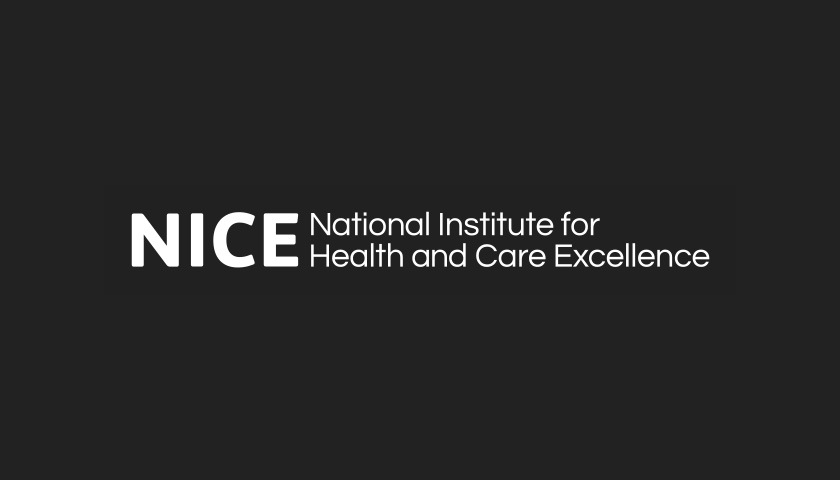Why companies don’t submit to NICE

In March 2022, Leela Barham argued that, in light of new highs in the number of non-submissions to UK’s HTA agency, NICE, it was time to ask companies why they choose not to submit. In this piece, she provides an independent view of the reasons companies have given through an anonymous survey conducted by the industry body, the ABPI.
ABPI survey
The ABPI surveyed their members in March 2021, including questions relating to terminated appraisals for non-submissions to NICE between 2016 and 2021. Forty-eight responses in total were received (not every response covered all questions, so the number of respondents is lower for some questions). These related to 30 non-submissions, 79% of all the non-submissions between 2016 and 2021. This equates to under 40% of all non-submissions since NICE began their work up to November 2021.
The non-submissions in scope for the ABPI survey related to solid cancers (8, 27%), haematological cancer (16, 53%), immunology (4, 13%), and non-cancer therapies (2, 7%). They were more likely to relate to small, orphan or ultra-orphan indications (8, 29%, 12, 43% and 3, 11% respectively) rather than common diseases (5, 18%).
The majority of non-submissions were also for subsequent indications (25, 86%) than new active substances (4, 14%) and monotherapies (21, 70%) than combinations (9, 30%).
Rigid pricing drove non-submissions
A potential reason not to submit is because of a mismatch between pricing and assessment of value. Price can typically only be by brand, albeit there can be some flexibilities via the Cancer Drugs Fund (CDF) for example. Value is assessed by indication by NICE.
If a lower price is needed for a follow-on indication versus those launched before, it can make it commercially unattractive to go to NICE because the price would have to be reduced for all indications. What matters is the net impact on revenue; it may be the case that revenue from the higher volume from a new indication in the market is not enough to offset the loss in revenue from a lower price on the older indications in the market.
The ABPI survey provides evidence that this is an important driver of non-submissions. Ten respondents (24%) selected “no differential net pricing/complex schemes available: Lack of flexibility to pursue differential net pricing or complex schemes, with consequent risk to previously approved indications.”
Combination challenges drove non-submissions
Another pricing challenge relates to combinations. Combinations can include treatments that are not covered by the same company, and in that case, the pricing of both the ‘add on’ and the ‘backbone’ therapy can affect whether a treatment is cost-effective.
NICE has famously not been able to recommend a breast cancer treatment in combination even if it was free because of the cost of the care that is needed, including backbone therapy.
Combinations feature in the ABPI survey. Respondents were given the option to select “combination: unable to present a cost-effective case due to pricing of other medicines in the combination.” Seven respondents (24% of the sample) selected this, providing evidence that combinations are a driver of non-submissions.
Uptake?
It’s a difficult one to tease out but even if companies feel that they could secure a positive NICE recommendation, if they don’t believe that there is a commercial opportunity in terms of medicines actually being prescribed and getting to patients (‘uptake’ rather than access via marketing authorisation and a NICE stamp of approval) they may not submit to NICE.
Four respondents selected “lack of clinical demand: no positioning of product on English clinical pathways.”
What is not clear is whether the clinical pathway could have been changed if the NHS wanted to do it, and whether that would have been worth it, in terms of the health outcomes that could have been generated for the money spent on the medicines and the investment in the changing pathway.
Not being able to get a NICE positive recommendation has not been a major driver
Anticipating that NICE will say no is an obvious reason not to submit. One of the reasons NICE might say no is because of the data available; it may not be mature, it may not reflect the decision that NICE needs to take by virtue of not including the relevant comparator and there can be a host of issues with the way whatever data is available is analysed. Only one respondent (equivalent to 3% of the respondents) selected “immature data: Too much clinical uncertainty due to immature data.”
This was a surprising finding given the focus on uncertainty in general in health technology assessment, including at NICE. Yet perhaps this is reassuring; maybe companies feel that they can work through approaches to manage uncertainty with NICE. Albeit that could translate into more complex and lengthy appraisals, and the use of managed access agreements (MEAs) where more data can be collected to support re-appraisals in the future.
Cost-effectiveness thresholds have not been a major driver
Only one respondent selected “unable to provide a cost-effective net price” as the reason not to submit. That may be reassuring for NICE.
It may also be reassuring for the civil servants at the Department of Health and Social Care (DHSC) who are really more influential on the ‘basic’ cost-effectiveness threshold as it’s become part of the government and industry negotiations via the voluntary scheme for branded medicines pricing and access (VPAS).
Of course, this reflects the thresholds in place at the time. There was more than one threshold in use for the time period the survey covered. There’s a basic threshold – the well known £20,000 to £30,000 per quality adjusted life year (QALY) – but there are also reflecting flexibilities for ultra-rare treatments for end of life. It’s likely that a lower threshold would cause more non-submissions if it were put in place.
Something else?
As is often the case with surveys, there were respondents who selected ‘other’ as the main reason for the non-submission. It’s not clear from the ABPI report whether this was explored further but since this was 6 responses (21%) it feels worthy of unpacking further.
Could it be the cost of the NICE appraisal? Could it be a lack of internal capacity to prepare for a NICE appraisal? Could it be that respondents didn’t feel that they could identify a main reason and that’s it’s related to the presence of several factors at once? It could be something else entirely, the unknown unknowns.
What the ABPI didn’t ask
The UK is just one market – and one that is relatively small as a share of global revenue with statista estimating it accounts for 2.5% of the global pharmaceutical sector – where companies can choose to launch. It could be that for some companies the UK is just not a priority launch country. That could reflect expectations of life post-Brexit, the challenges of uptake as well as the commercial realities of rebates required on branded medicines. If it’s the latter, then perhaps more non-submissions could be expected in the future, with an unprecedented payment on sales of 23.7% predicted to be required for members of the VPAS in 2023.
On the question of the attractiveness of the UK as a launch country, it is perhaps best not to ask and instead look at revealed preference. Bluebird bio decided not to pursue the European market and the UK in August 2021, although the company is currently facing challenges even with the decision to focus on the US market.
Aside from such a high-profile example, it’s difficult to identify publicly available data on what medicines do not come to the UK at all – companies could choose not to seek UK regulatory approval, perhaps even more worrying than the absence of a NICE submission - but that could help shed light on the tricky question of how the UK is perceived by industry.
Understandable perhaps for an industry group, the ABPI didn’t reveal (or perhaps didn’t even ask in their survey) the specific companies that responded. Given it is companies – not products – that decide whether to submit and companies that government wants to court from an industrial policy perspective, company views are needed. Further work could identify the companies who haven’t submitted, but will they publicly share the reasons why?
Are patients missing out?
The reason for the interest in non-submissions should always come back to patients.
That companies choose not to submit for those medicines that are not offering marginal benefits compared to treatment that is already provided is not a concern, because patients in England (and Wales and Northern Ireland whose health care systems tend to follow NICE recommendations) would not be missing out. Even more so if these would not be cost-effective because more health can come from spending on cost-effective interventions.
Yet the challenge is that we don’t know whether patients are missing out on cost-effective treatments by the very fact that they don’t get NICE’d. If patients are missing out on cost-effective treatments, this is an issue that merits policy attention.
Note: Hat tip to the ABPI who reached out to share the results of their ABPI member survey, published in August 2021. This was not picked up in desk research for the March 2022 piece, potentially because of terminology as the ABPI has focused on the phrase “NICE terminated appraisals”. That said, the ABPI survey still doesn’t provide the views of individual companies!
About the author
 Leela Barham is a researcher and writer who has worked with all stakeholders across the health care system, both in the UK and internationally, on the economics of the pharmaceutical industry. Leela worked as an advisor to the Department of Health and Social Care on the 2019 Voluntary Scheme for Branded Medicines Pricing and Access (VPAS).
Leela Barham is a researcher and writer who has worked with all stakeholders across the health care system, both in the UK and internationally, on the economics of the pharmaceutical industry. Leela worked as an advisor to the Department of Health and Social Care on the 2019 Voluntary Scheme for Branded Medicines Pricing and Access (VPAS).













